NOTE: It’s Friday, March 3, 17:20 local time. We arrived back from our visit with Ralph and Anjar about an hour ago. Since then we’ve thrown in a load of laundry and showered. Now it’s time to catch this blog up – starting with last Tuesday’s visit to Rinca and Komodo National Park, so sorry for the delay. Hopefully we’ll have cooperative internet and we’ll be able to bring the blog up to date before we get behind again.
Noon Report:
- Location: S 08° 37.70′, E 119° 41.80′
- Speed: Anchored
- Course: Anchored
- Weather: Cloudy
- Temperature: 26º C, 79º F
- Wind: WNW 4 knots, 4.6 mph
Pretty normal morning. We did the usual stuff (except for Cheryl who slept while I was exercising).
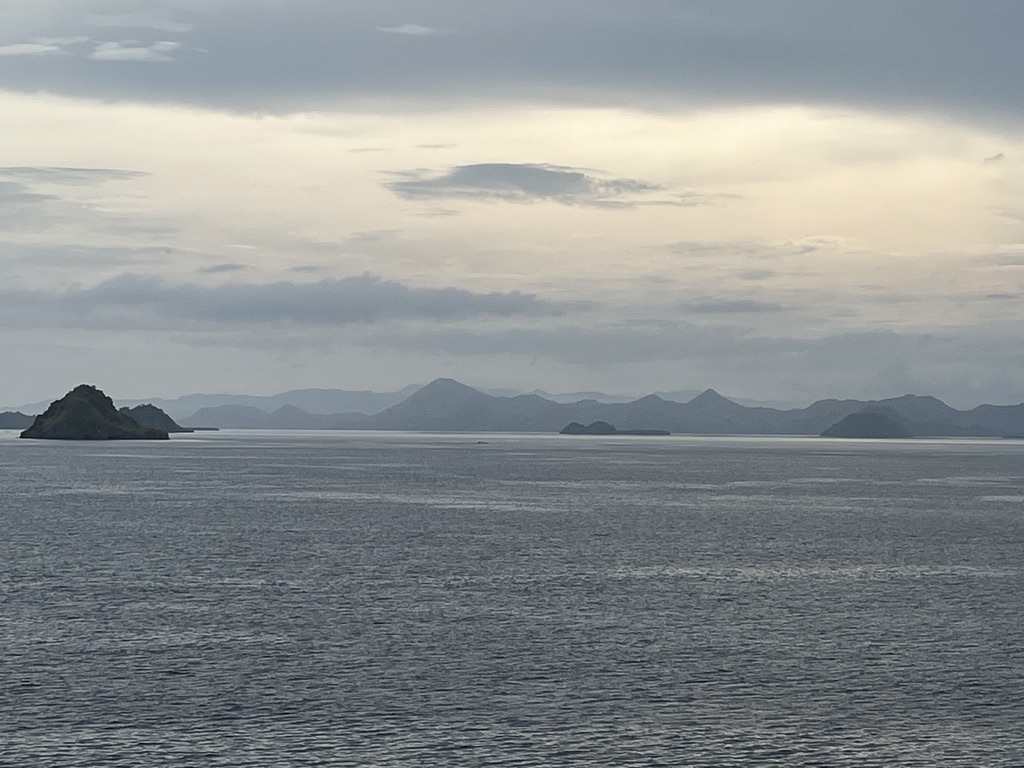
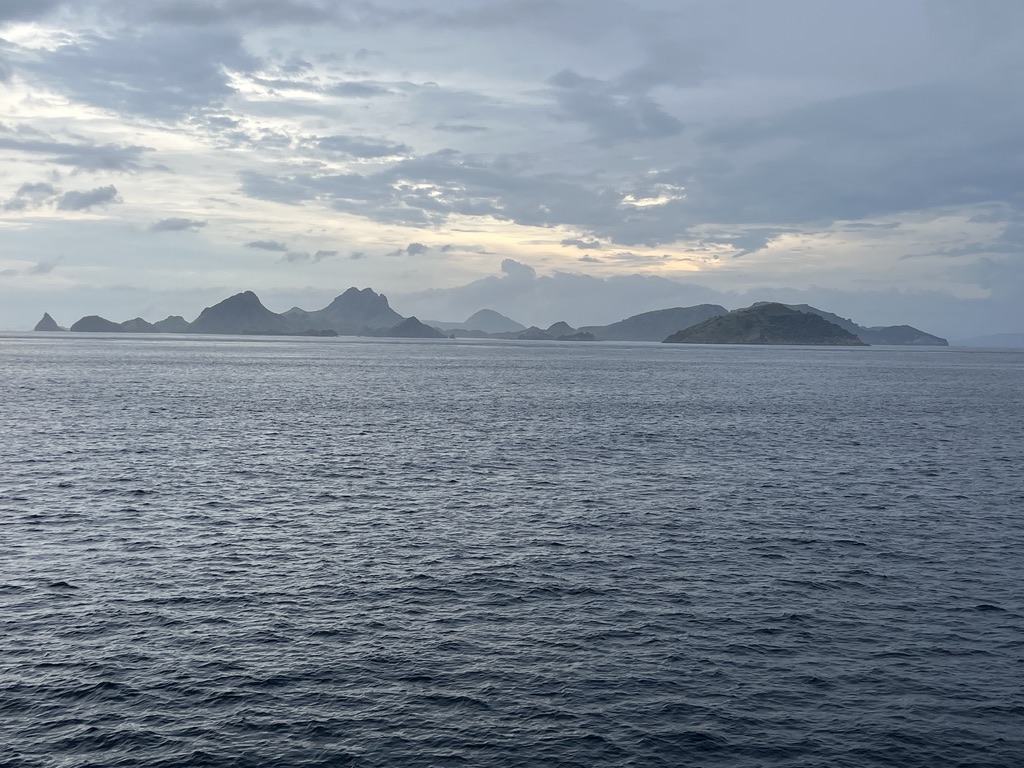
We arrived at our anchorage at about 9:30. We anchored in a bay on the north side of Rinca Island. This was a late change to our itinerary. Our original destination was Komodo Island (next to Rinca Island). However, visitors are not currently allowed on Komodo Island. However there are units of Komodo National Park on 3 nearby Islands (including Rinca) and this is the ‘tourist unit’ of the national park.
I may have mentioned earlier that Cheryl is trying desperately to get better before we get to Bali so she turned in her ticket for today’s visit to the park. I left her in bed at 11:00 and reported to the Theatre to join my group for the tender ride to the dock.
We were met there by our guide and two assistants – one carrying a stick with a fork on the end. This is the standard dragon controlling implement.
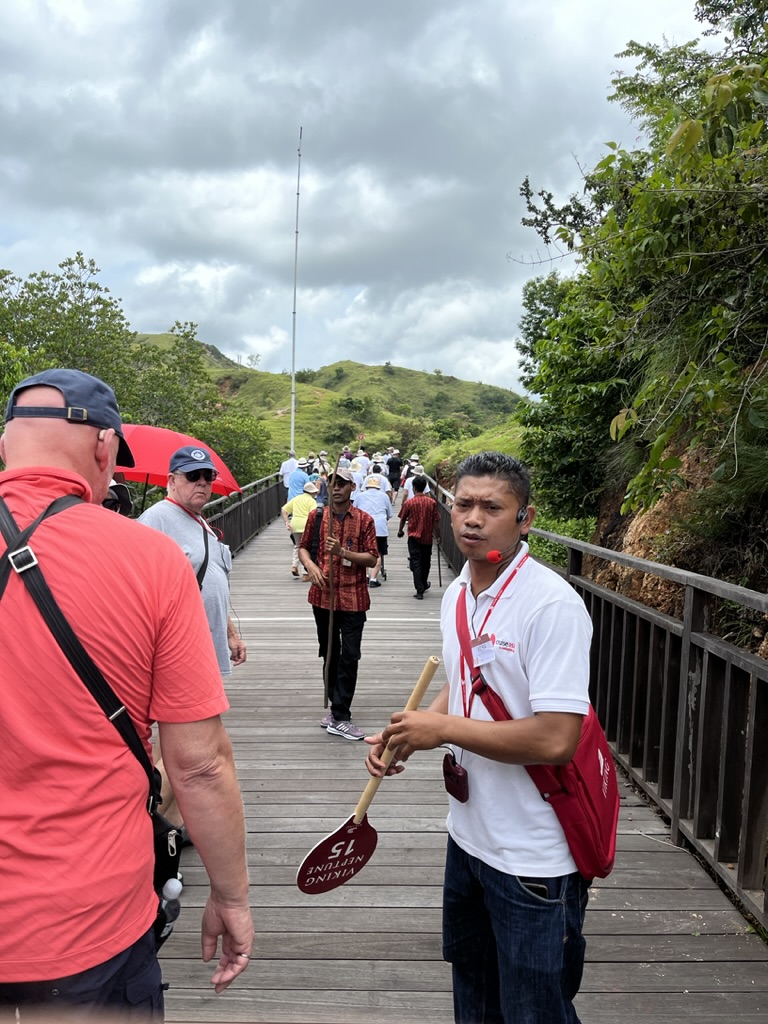
In this photo you’ll notice that we are walking along a raised walkway with railings on both sides.
- Only the smaller dragons can climb up to the walkway
- This is the only zoo I’ve been to where the animals roam freely and the public is confined.
After a grief introduction we headed off in search of the largest members of the lizard family.
Randy’s Factoids:
- Komodo National Park was formed in 1980 to protect the Komodo Dragons and their habitat.
- Mammals within the park include the Timor Rusa Deer, Horses, Water Buffalo, Wild Boar, Crab-Eating Macaque, Asian Palm Civit – or as the dragons call them, LUNCH!
- The island is also home to Rinca Rats and Fruit Bats.
- It has been claimed that the dragons have a venomous bite. This is not technically true. They have glands in their lower jaw that secrete toxic proteins. Once bitten their prey will, after a period of time, succumb to the effects of these toxins.
- Komodo eggs are incubated in nesting holes for 7-8 months, hatching generally in April when insects are most plentiful
- Young dragons are vulnerable to predators (including adult dragons) and move to trees for safety.
- Young dragons take 8-9 months to mature and are estimated to live up to 30 years.
We arrived back at the ship just before 2:00. I grabbed Cheryl and she accompanied me as I headed up to the Cafe for a late lunch. While we were eating Denny and Pat stopped by to see if we wanted to get together later for a game. We agreed to meet them at 4:00. After lunch I showered and had a quick nap and we headed down to Deck 2 for a couple of rounds of ‘Shut Up Orville’.
Back at the room we did our best to try to find out what was going wrong with the internet. We also visited Guest Services to get answers to some of our specific questions about Bali.
Dinner was followed by BBB (16/27 – we were quite proud of that score but still only got us a third place).
Then it was back to the stateroom where I left Cheryl reading in bed while I headed back down to 2 in hopes of finding a better internet signal to upload today’s photos. No such luck. I’ll try again tomorrow.
Or not, it’s to bed for me.
Nite all, R
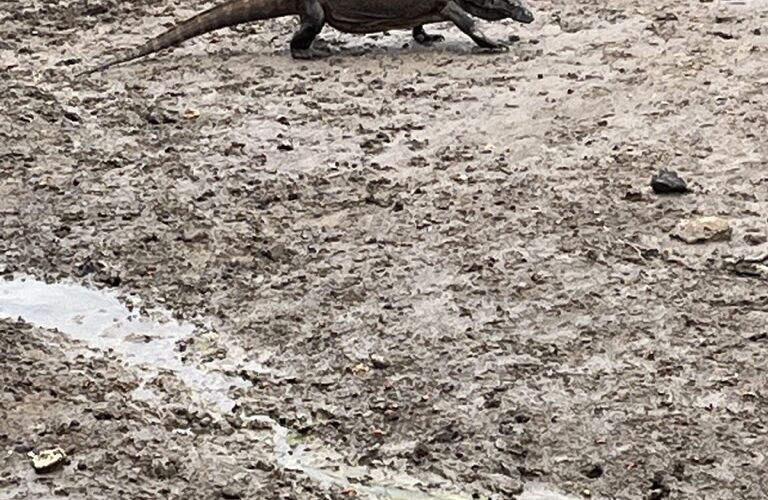
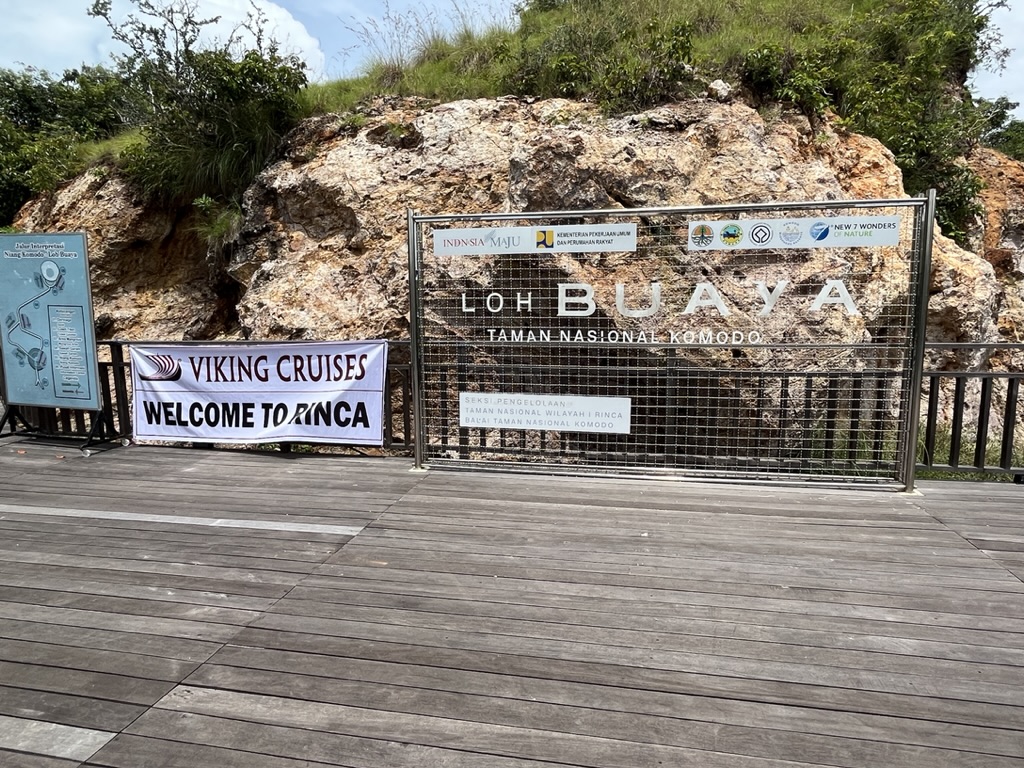
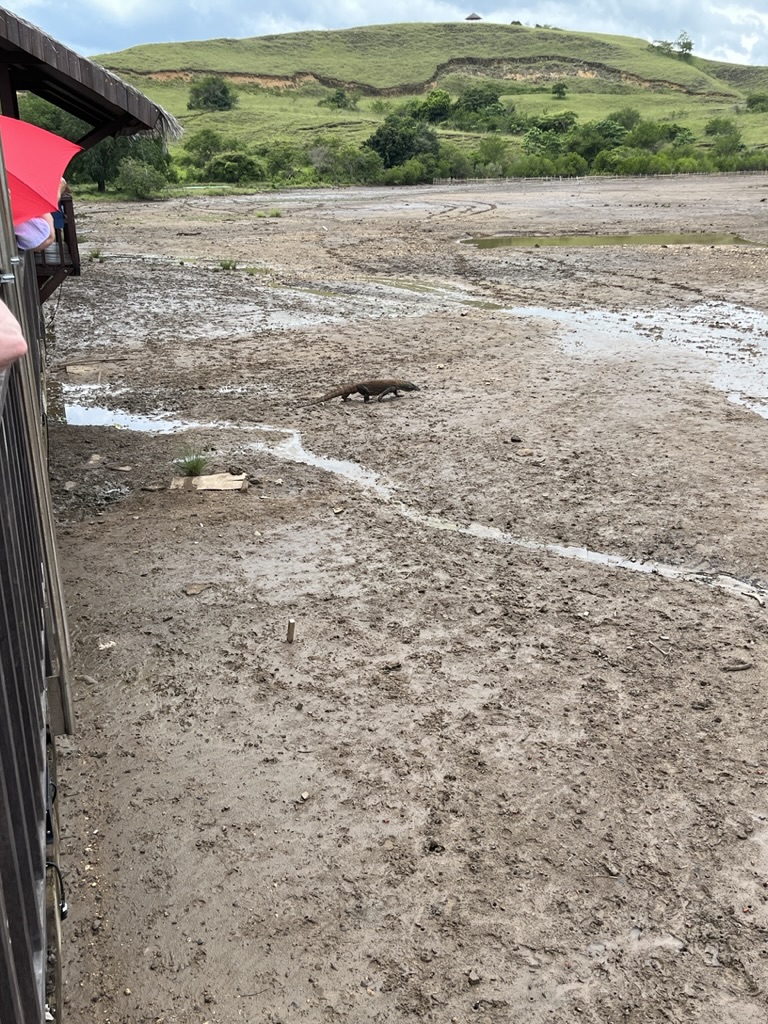
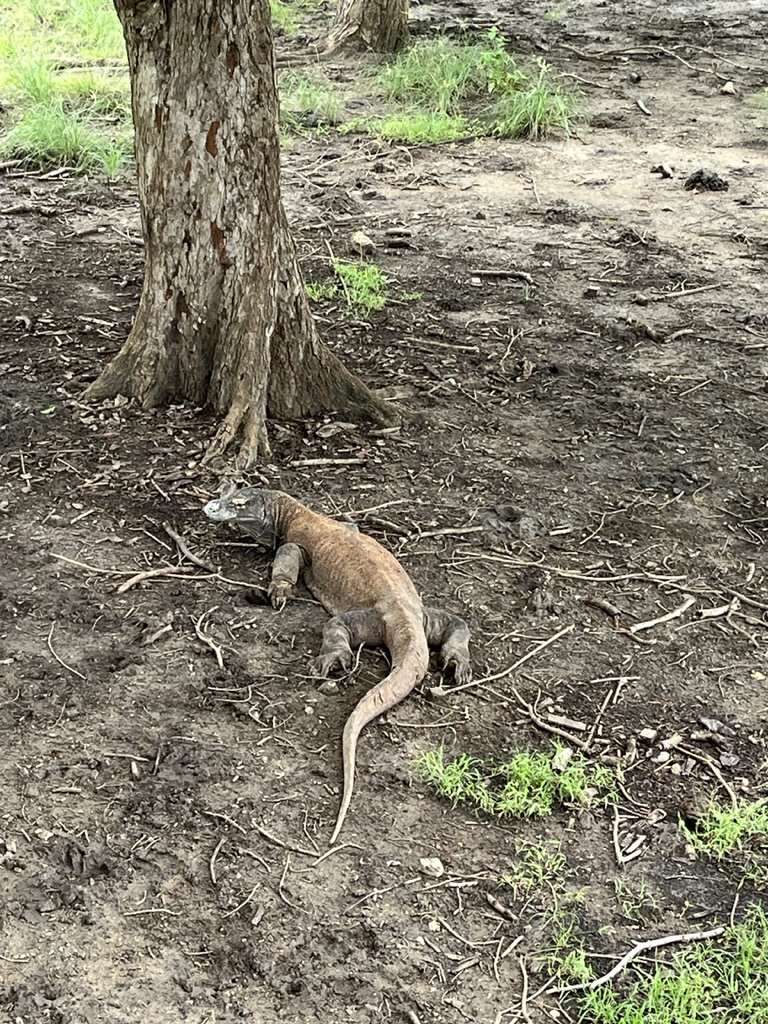
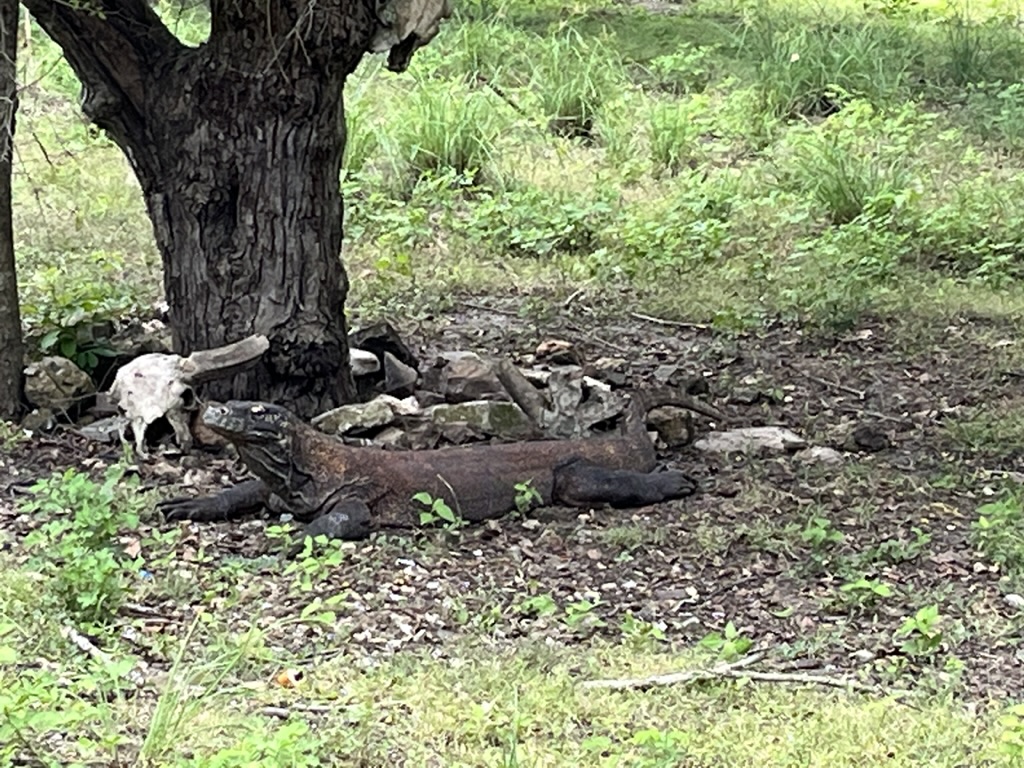
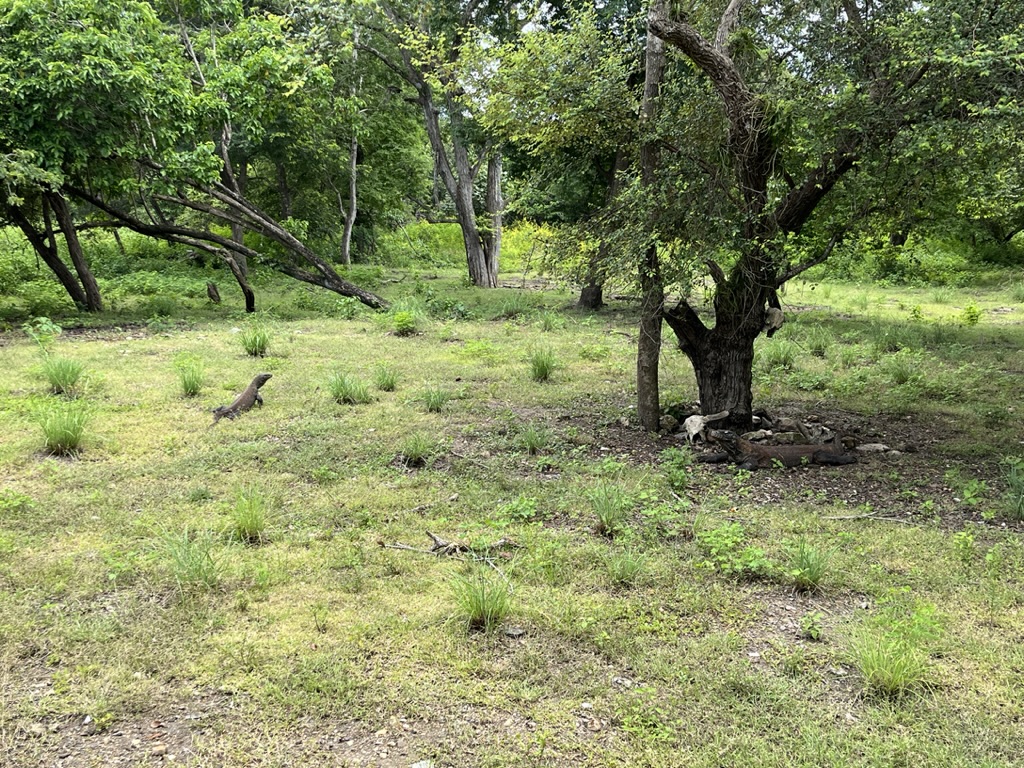
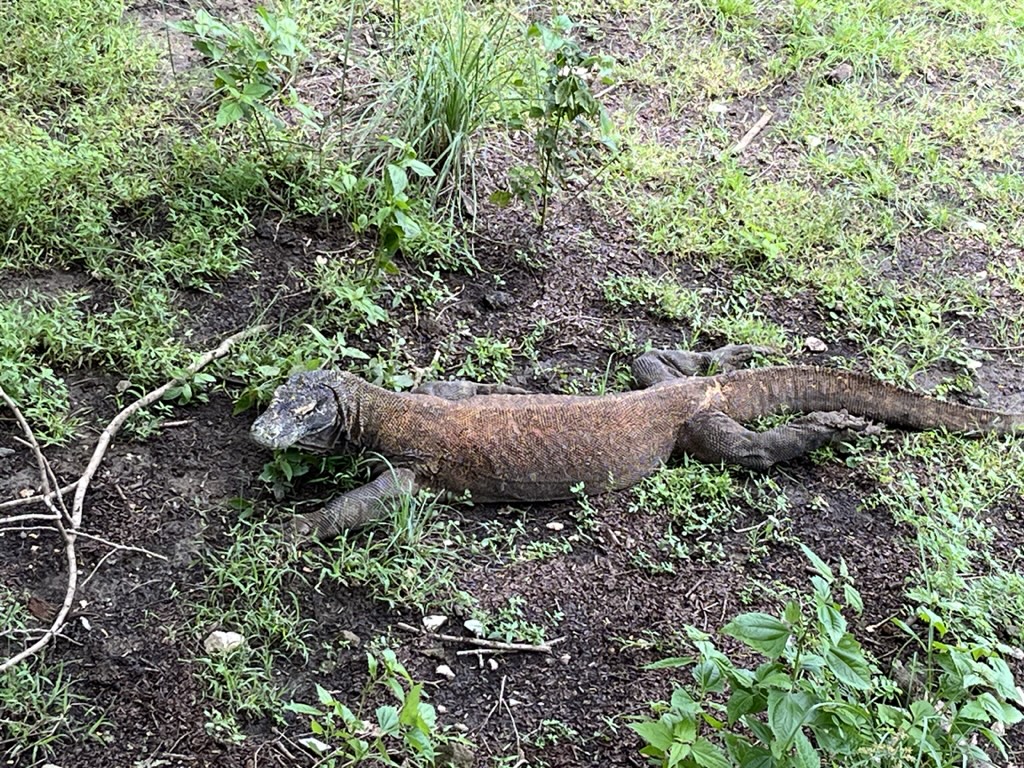
I am sure that whatever is being eaten will be relieved to know that the dragon isn’t venomous.
Yeah, what Kim said!